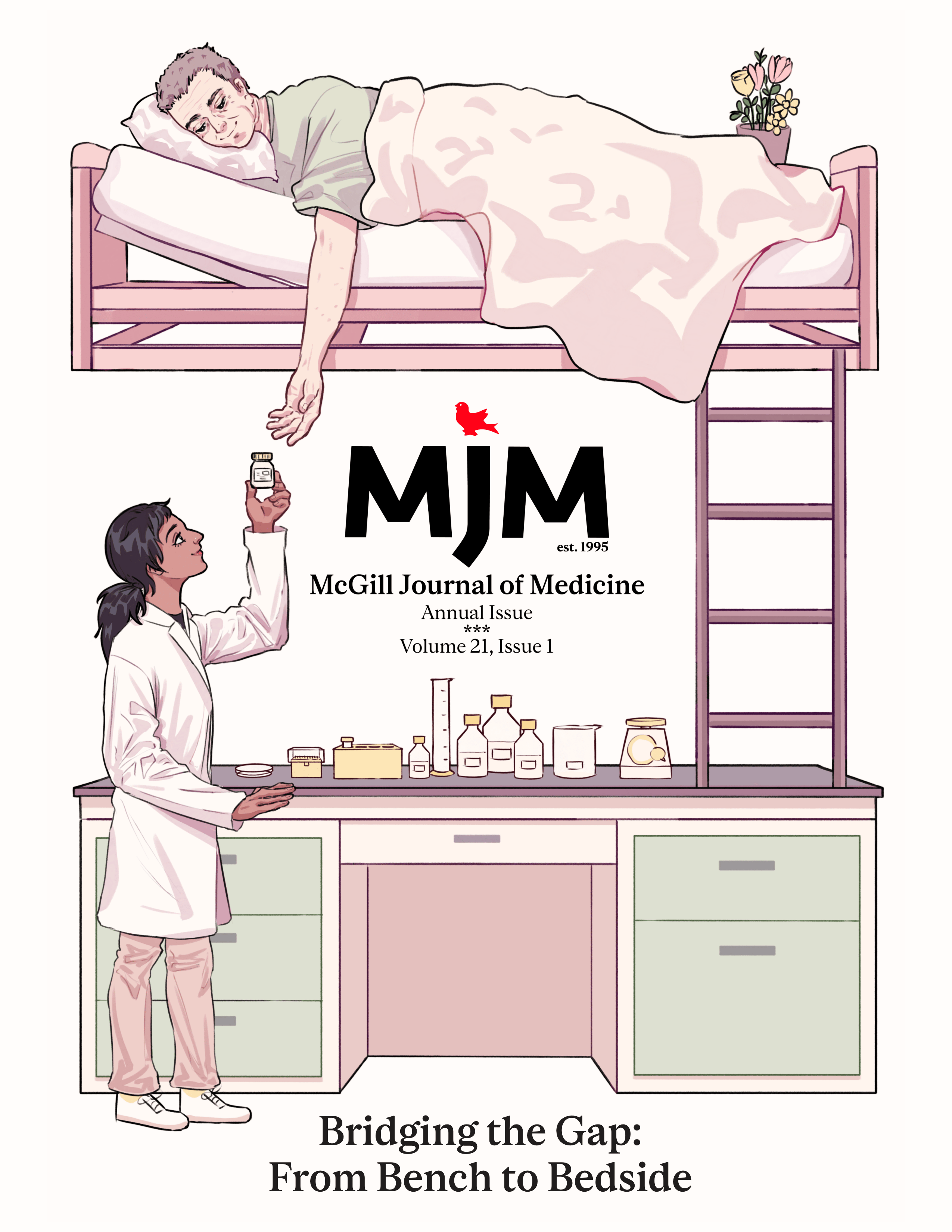Published 2024-01-26
Keywords
- breast mass,
- breast lump,
- breast cancer
How to Cite
Copyright (c) 2025 Rose Di Ioia

This work is licensed under a Creative Commons Attribution-NonCommercial-ShareAlike 4.0 International License.
Abstract
Palpable breast masses are common reasons for presenting to the primary care or emergency clinic setting. Although most palpable masses are benign in etiology, the possibility of malignancy exists and may be anxiety-inducing to patients. A systematic approach to history-taking, to clinical breast examination and to imaging is important for the adequate evaluation of a palpable breast mass.
This article aims to provide medical students with a stepwise approach to the evaluation and diagnosis of palpable breast masses. Given the wide spectrum of diseases associated with palpable masses, the differential diagnosis and management is out of the scope of this paper. However, we will touch upon the breast cancers most commonly associated with breast masses and briefly mention their respective treatments.
Downloads
References
- Expert Panel on Breast Imaging:, Moy L, Heller SL, Bailey L, D’Orsi C, DiFlorio RM, et al. ACR Appropriateness Criteria® Palpable Breast Masses. J Am Coll Radiol [Internet]. 2017 May;14(5S):S203–24. Available from: http://dx.doi.org/10.1016/j.jacr.2017.02.033
- Qaseem A, Lin JS, Mustafa RA, Horwitch CA, Wilt TJ, Clinical Guidelines Committee of the American College of Physicians, et al. Screening for Breast Cancer in Average-Risk Women: A Guidance Statement From the American College of Physicians. Ann Intern Med [Internet]. 2019 Apr 16;170(8):547–60. Available from: http://dx.doi.org/10.7326/M18-2147
- Jackson T, Carmichael C, Lovett K, Scott M, Shakya S, Sotak M. Approach to the patient with a palpable breast mass. JAAPA [Internet]. 2022 Oct [cited 2023 Jan 3];35(10):22. Available from: https://journals.lww.com/jaapa/Fulltext/2022/10000/Approach_to_the_patient_with_a_palpable_breast.5.aspx
- Irvin W Jr, Muss HB, Mayer DK. Symptom management in metastatic breast cancer. Oncologist [Internet]. 2011 Aug 31;16(9):1203–14. Available from: http://dx.doi.org/10.1634/theoncologist.2011-0159
- Morrow M. The evaluation of common breast problems. Am Fam Physician [Internet]. 2000 Apr 15;61(8):2371–8, 2385. Available from: https://www.ncbi.nlm.nih.gov/pubmed/10794579
- Vargas HI, Vargas MP, Eldrageely K, Gonzalez KD, Khalkhali I. Outcomes of clinical and surgical assessment of women with pathological nipple discharge. Am Surg [Internet]. 2006 Feb;72(2):124–8. Available from: https://www.ncbi.nlm.nih.gov/pubmed/16536240
- De Grève J, Sermijn E, De Brakeleer S, Ren Z, Teugels E. Hereditary breast cancer: from bench to bedside. Curr Opin Oncol [Internet]. 2008 Nov;20(6):605–13. Available from: http://dx.doi.org/10.1097/CCO.0b013e3283139173
- Sun YS, Zhao Z, Yang ZN, Xu F, Lu HJ, Zhu ZY, et al. Risk Factors and Preventions of Breast Cancer. Int J Biol Sci [Internet]. 2017 Nov 1;13(11):1387–97. Available from: http://dx.doi.org/10.7150/ijbs.21635
- Barton MB, Harris R, Fletcher SW. The rational clinical examination. Does this patient have breast cancer? The screening clinical breast examination: should it be done? How? JAMA [Internet]. 1999 Oct 6;282(13):1270–80. Available from: http://dx.doi.org/10.1001/jama.282.13.1270
- Barlow WE, Lehman CD, Zheng Y, Ballard-Barbash R, Yankaskas BC, Cutter GR, et al. Performance of diagnostic mammography for women with signs or symptoms of breast cancer. J Natl Cancer Inst [Internet]. 2002 Aug 7;94(15):1151–9. Available from: http://dx.doi.org/10.1093/jnci/94.15.1151
- D’Orsi CJ, Sickles EA, Mendelson EB, Morris EA, et al. ACR BI-RADS® Atlas, Breast Imaging Reporting and Data System. Reston, VA, American College of Radiology; 2013.
- Bevers TB, Helvie M, Bonaccio E, Calhoun KE, Daly MB, Farrar WB, et al. Breast Cancer Screening and Diagnosis, Version 3.2018, NCCN Clinical Practice Guidelines in Oncology. J Natl Compr Canc Netw [Internet]. 2018 Nov;16(11):1362–89. Available from: http://dx.doi.org/10.6004/jnccn.2018.0083
- Gutwein LG, Ang DN, Liu H, Marshall JK, Hochwald SN, Copeland EM, et al. Utilization of minimally invasive breast biopsy for the evaluation of suspicious breast lesions. Am J Surg [Internet]. 2011 Aug;202(2):127–32. Available from: http://dx.doi.org/10.1016/j.amjsurg.2010.09.005
- Duffy MJ. Serum tumor markers in breast cancer: are they of clinical value? Clin Chem [Internet]. 2006 Mar;52(3):345–51. Available from: http://dx.doi.org/10.1373/clinchem.2005.059832
- Robson ME, Bradbury AR, Arun B, Domchek SM, Ford JM, Hampel HL, et al. American Society of Clinical Oncology Policy Statement Update: Genetic and Genomic Testing for Cancer Susceptibility. J Clin Oncol [Internet]. 2015 Nov 1;33(31):3660–7. Available from: http://dx.doi.org/10.1200/JCO.2015.63.0996
- Badve SS, Gökmen-Polar Y. Ductal carcinoma in situ of breast: update 2019. Pathology [Internet]. 2019 Oct;51(6):563–9. Available from: http://dx.doi.org/10.1016/j.pathol.2019.07.005
- Pramod N, Nigam A, Basree M, Mawalkar R, Mehra S, Shinde N, et al. Comprehensive Review of Molecular Mechanisms and Clinical Features of Invasive Lobular Cancer. Oncologist [Internet]. 2021 Jun;26(6):e943–53. Available from: http://dx.doi.org/10.1002/onco.13734
- Trayes KP, Cokenakes SEH. Breast Cancer Treatment. Am Fam Physician [Internet]. 2021 Aug 1;104(2):171–8. Available from: https://www.ncbi.nlm.nih.gov/pubmed/34383430





